Antidepressant effects of a single ketamine infusion evaluated

Repeated ketamine infusions have cumulative and sustained antidepressant effects. Reductions in depressive symptoms were maintained among responders through once-weekly infusions” Phillips et al (2019). Abstract: OBJECTIVE: Subanesthetic ketamine doses have been shown to have rapid yet transient antidepressant effects in patients with treatment-resistant depression, which may be prolonged by repeated administration. The purpose of this […]
Review looks at the safety of oral and intravenous iron
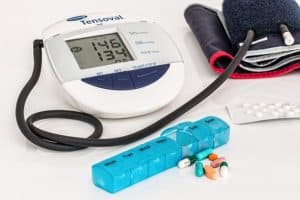
Intravenous iron is being used more frequently to replete iron stores. True anaphylaxis is very rare, but complement-mediated infusion reactions may be seen in up to 1 in every 200 patients” DeLoughery (2019). Abstract: As the adverse effects of iron deficiency are better recognized, the use of oral and intravenous iron has increased dramatically. Oral […]
Comparative efficacy of antimicrobial dressings and securement devices

The purpose of our study is to carry out a Bayesian network meta-analysis comparing the efficacy of different antimicrobial dressings for prevention of catheter-related blood infections (CRBSI) and rank these antimicrobial dressings for practical consideration” Dang et al (2019). Abstract: PURPOSE: The purpose of our study is to carry out a Bayesian network meta-analysis comparing […]
Impact of chlorhexidine gluconate on the skin microbiota of children and adults

We observed no differences in pediatric patients; however, multiple genera of bacteria were observed to be significantly less abundant in the adults bathing with CHG” Kates et al (2019). Abstract: We examined the effect of chlorhexidine gluconate (CHG) bathing on the skin microbiota of adult and pediatric patients. We observed no differences in pediatric patients; […]
Effect of two tourniquet techniques on peripheral IV cannulation

Elastic tourniquets (ETs) and blood pressure cuffs (BPCs) are frequently used for venodilation. Although BPCs lead to increased venodilation and decreased compressibility, it is unclear whether this translates into a meaningful patient-centered outcome. This study aimed to determine whether one method is superior for success on the first attempt” Tran et al (2019). Abstract: OBJECTIVES: […]
Detection of antibiotic resistance genes from blood cultures

We assessed ELITe MGB® assays in blood culture workflow to detect main carbapenemase and ESBL genes, Staphylococcus aureus and mec genes in less than 3h” Bianco et al (2019). Abstract: Molecular assays may constitute a valid method to timely predict antimicrobial resistance and optimize empirical antibiotic therapies. We assessed ELITe MGB® assays in blood culture […]
Skin antisepsis with chlorhexidine-alcohol versus povidone iodine-alcohol

In critically ill patients, 2% chlorhexidine-alcohol is superior to 5% povidone iodine-alcohol for skin preparation before central venous and arterial catheters; whether this finding can be extended to PVC inserted in the wards remains speculative” Guenezan et al (2019). Abstract: INTRODUCTION: Short peripheral intravenous catheters (PVCs) are the most frequently used invasive medical devices in […]
Vascular access decision algorithm is not superior to clinician judgment

The results of this study indicate that the quality improvement intervention and algorithm decision-making tool did not improve accuracy of use of access devices” Panter et al (2019). Abstract: BACKGROUND: Venous access, via a midline peripheral catheter (midline) or a peripherally inserted central catheter, is used regularly in the neurointensive care unit as a means […]
Percutaneous removal of a precariously placed pericardial PICC

This case describes an unusual complication of peripherally inserted central catheter perforation into the pericardial space with subsequent successful percutaneous removal” Tyner et al (2019). Abstract: Peripherally inserted central catheters provide access to the central chest veins and allow administration of long-term antibiotics, chemotherapy, blood products, fluids, and parenteral nutrition. Peripherally inserted central catheters provide […]
Anti-suicidal efficacy of repeated ketamine infusions

We confirmed that six repeated ketamine infusions for Chinese suicidal depressed patients were effective in generating a rapid response of suicidal ideation, especially low SI achieved more benefits from ketamine infusions” Zhan et al (2019). Abstract: BACKGROUND: Suicide is a tremendous public health crisis and is demanded urgent intervention. Previous studies found that ketamine intervention […]
Ultrasound probe contamination investigated in this study
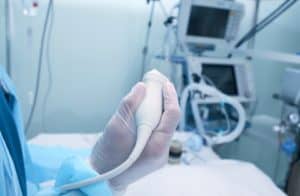
In this study, nearly 80% of Staphylococcus aureus placed on US heads in gel survived for 1 hour, with survival of 3 days possible in other types of organic matter” Spratt et al (2019). Abstract: Therapeutic ultrasound (US) is commonly used in the rehabilitation of soft tissue injuries including wounds. US heads and coupling gel […]
Reducing blood culture contamination in an intensive care unit

In the intervention and postintervention period, 1,597 cultures were obtained and 14 (0.9%) were discarded; 26 (1.6%) of the valid cultures (n = 1,583) contained contaminants” Huang et al (2019). Extract: From the total of 4,198 samples collected during the preintervention period, 4.0% (165 of 4,126) cultures were contaminated and 1.7% (72 of 4,198) were discarded. In […]
Peripheral IV cannulation first-time insertion success in the emergency department

This study aimed to identify the incidence of and factors associated with peripheral intravenous catheter/cannula (PIVC) first time insertion success (FTIS) in the emergency department (ED)” Carr et al (2019). Abstract: OBJECTIVES: This study aimed to identify the incidence of and factors associated with peripheral intravenous catheter/cannula (PIVC) first time insertion success (FTIS) in the […]
Case study examines vascular access choice prior to ICU admission

The decision is made to initiate central venous access and admit the patient to the intensive care unit (ICU). He has one 18-gauge peripheral intravenous catheter in place, with other good peripheral targets available. What is the best choice of central venous access for this patient?” Govindan and Simpson (2019). Extract: A 60-year-old man with […]
Adaptive smith predictor controller for total intravenous anesthesia automation

The main objective of this proposal is to design robust automated control system that work efficiently in most of the patients with smooth BIS and minimum variations of propofol during surgery to avoid adverse post reactions and instability of anesthetic parameters” Patel et al (2018). Abstract: Anesthetic agent propofol needs to be administered at an […]
Study offers analysis of central venous catheter utilization

Incidence of CLABSI can be significantly reduced through proper aseptic techniques, surveillance, and active management strategies, including elimination of idle central line days” Aufricht et al (2019). Abstract: Central line-associated bloodstream infections (CLABSIs) are one of the most dangerous and costly types of hospital-acquired infections. Incidence of CLABSI can be significantly reduced through proper aseptic […]
Antibiotic locks for the treatment of catheter-related blood stream infection

Antibiotic lock therapy (ALT), in conjunction with systemic antibiotics, is recommended by scientific societies as a treatment of uncomplicated catheter-related bloodstream infections” Labriola (2019). Abstract: Antibiotic lock therapy (ALT), in conjunction with systemic antibiotics, is recommended by scientific societies as a treatment of uncomplicated catheter-related bloodstream infections (CRBSI) in hemodynamically stable hemodialysis patients for whom […]
Hepatitis B and C among healthcare workers and patients

In the EU/EEA approximately 9 million people are chronically infected with hepatitis B virus (HBV) or hepatitis C virus (HCV), and many are undiagnosed. Targeted active case finding initiatives are needed” Tavoschi et al (2019). Abstract: Background: In the EU/EEA approximately 9 million people are chronically infected with hepatitis B virus (HBV) or hepatitis C […]
Study looks at optimizing patient flow in infusion centers

The National Comprehensive Cancer Network (NCCN) formed an Infusion Efficiency Workgroup to determine best practices for operating efficient and effective infusion centers” Sugalski et al (2019). Abstract: PURPOSE: The National Comprehensive Cancer Network (NCCN) formed an Infusion Efficiency Workgroup to determine best practices for operating efficient and effective infusion centers. METHODS: The Workgroup conducted three […]
Central line associated blood stream infection due to Exophiala dermatitidis

We describe an E. dermatitidis CLASBI. The strain was identified by morphological and molecular methods. E. dermatitidis CLASBI is highly uncommon, but seems to be increasing” Vila et al (2019). Abstract: Exophiala dermatitidis is a dematiaceous fungus with yeast-like and hyphal growth states that may cause cutaneous and visceral infections. Recently, E. dermatitidis has been […]
Clinical impact of chronic venous changes induced by central lines in children

To explore the hypothesis that central venous stenosis/obstructions (CVS/O) in children are influenced by prior central venous access devices (CVADs) and are associated with future risk for thromboses” Gnannt et al 92019). Abstract: PURPOSE: To explore the hypothesis that central venous stenosis/obstructions (CVS/O) in children are influenced by prior central venous access devices (CVADs) and […]
Physicochemical compatibility and stability of linezolid with parenteral nutrition
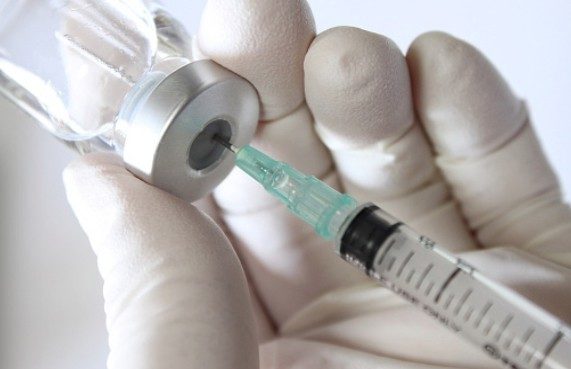
The addition of linezolid to TPN mixtures for patients treated for linezolid-sensitive infections may reduce the extent of vascular access handling, resulting in a diminished risk of unwanted catheter-related infections” Tomczak et al (2019). Abstract: Patients referred to intensive care units (ICU) require special care due to their life-threatening condition, diseases and, frequently, malnutrition. Critically […]
Influence of parenteral nutrition delivery techniques on growth of low birth weight newborns

The aim of the conducted study was to evaluate the effect of two PN delivery techniques (PICC and PVC) on anthropometric parameters and neurodevelopment of VLBW newborns” Aldakauskienė et al (2019). Abstract: Background and Objectives: In very low birth weight (VLBW) newborns, parenteral nutrition (PN) is delivered via a peripheral venous catheter (PVC), a central […]
Quality of life of patients using the HeRO Graft in end-stage renal disease
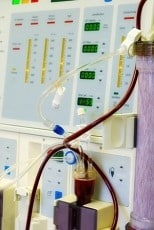
The objective is to evaluate the quality of life of patients using the HeRO Graft in end-stage renal disease for hemodialysis” Maqsood and Rubab (2019). Abstract: End-stage renal disease (ESRD) is one of the most feared consequences of kidney disease. A large number of patients with ESRD require long-term hemodialysis. Vascular access options for hemodialysis […]
Electronic medical record-based tool for improved cancer treatment handoffs

Ineffective handoffs contribute to gaps in patient care and medication errors, which jeopardize patient safety and lead to poor-quality care. The project aims are to develop and implement a standardized handoff process using an electronic medical record (EMR)-based tool to ensure optimal communication of treatment-related information for patients receiving cancer treatment between oncology nurses” Pandya […]
The protective effect of central venous catheter locking solutions

The aim of this study was to analyze the impact of routine locking solutions on the incidence of CRBSI and ESI, in preserving catheter function, and on the rate of all-cause mortality in patients undergoing hemodialysis” Chen et al (2019). Abstract: Catheter-related bloodstream infections (CRBSIs) and exit-site infections (ESIs) are common complications associated with the […]
Reducing placement complications associated with tunneled catheters

Using modern-day techniques, the incidence of mechanical complications during placement of tunneled catheters can be diminished. Hence, routine use of ultrasound guidance for insertion of tunneled dialysis catheters should become the standard of care” Aurshina et al (2019). Abstract: OBJECTIVE: While placement of tunneled dialysis catheters for hemodialysis access is considered a routine procedure, it […]
Hospital epidemiologists’ and infection preventionists’ opinions regarding hospital-onset bacteremia and fungemia

To ascertain opinions regarding etiology and preventability of hospital-onset bacteremia and fungemia (HOB) and perspectives on HOB as a potential outcome measure reflecting quality of infection prevention and hospital care” Dantes et al (2019). Abstract: OBJECTIVE: To ascertain opinions regarding etiology and preventability of hospital-onset bacteremia and fungemia (HOB) and perspectives on HOB as a […]
Innovations in vascular access for hemodialysis
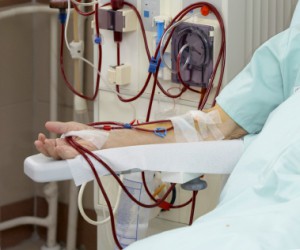
Worldwide, hemodialysis remains the prevalent dialysis modality for more than 2 million patients who require well-functioning vascular access for this procedure” Agarwal et al (2019). Abstract: Worldwide, hemodialysis remains the prevalent dialysis modality for more than 2 million patients who require well-functioning vascular access for this procedure. Creation of an arteriovenous fistula for long-term hemodialysis […]
Massive air embolism caused by a central venous catheter

We herein report a case of massive air entrainment from an inadvertently disconnected port of a central venous catheter (CVC) in the neck which culminated in an airlock of the ECMO circuit” Kumar et al (2019). Abstract: Extracorporeal membrane oxygenation (ECMO) has become an integral treatment option for patients as a bridge to transplant, management […]

